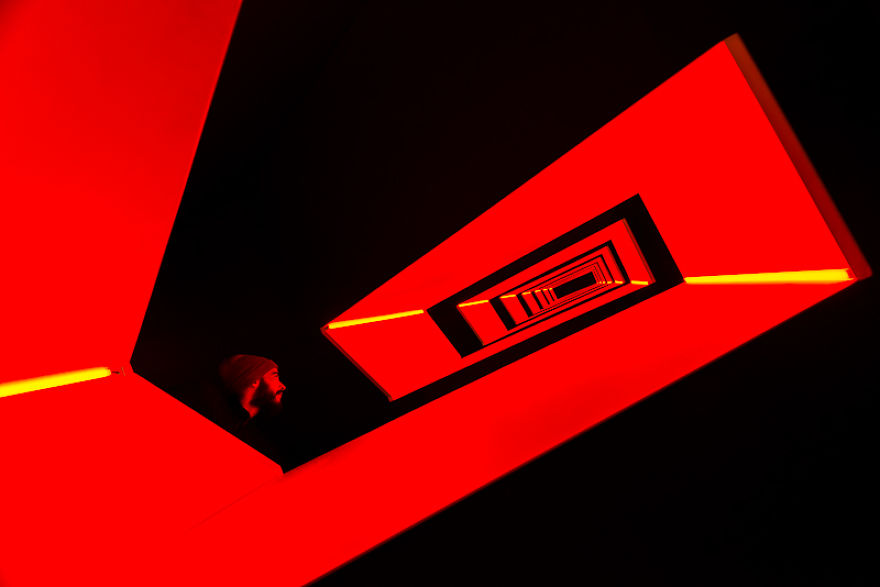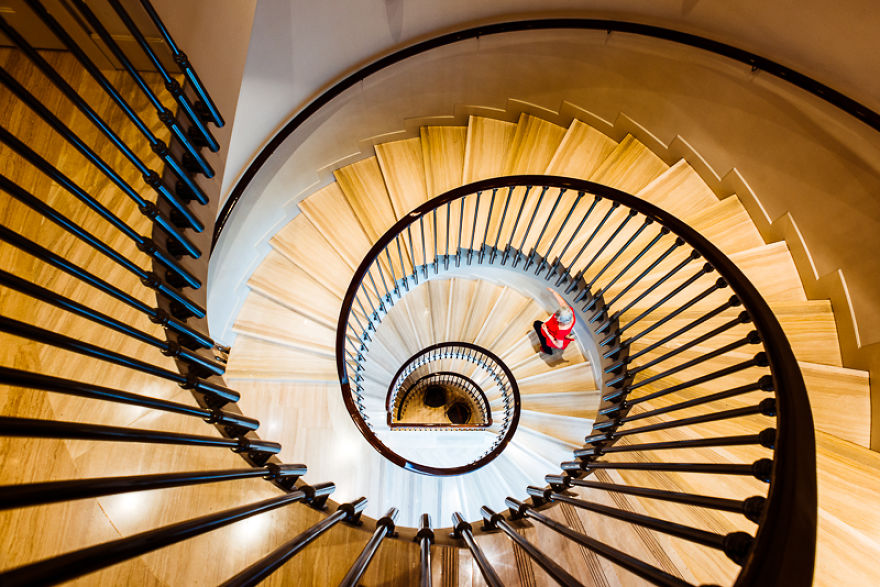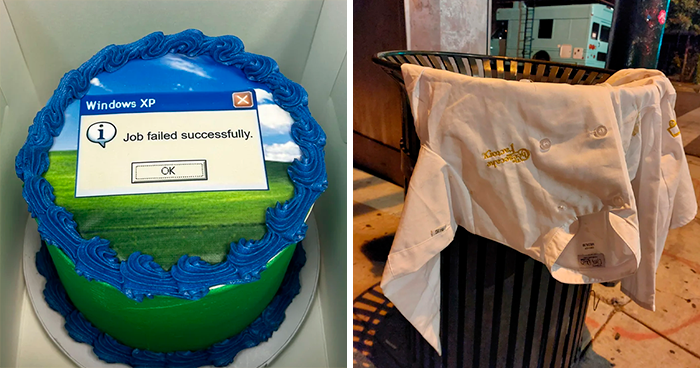Staircases doesn’t come to mind when you think of interesting topics to photograph. But many are designed as part of a building’s internal beauty rather than just an emergency escape if the lifts fail. Keep the eyes open: you can easily miss it if you are lazy to go up by foot.
There’s something super addicting about the perfect shapes of the staircases that captures my eye and it’s hard to take your eyes off them. Sometimes it’s the symmetry, sometimes they just make us dizzy. Elegant and complex, they create beautiful photogenic patterns.
Shooting indoors is not easy and you will have one big problem: the light. Light inside buildings is often very low and artificial, so you will have to find the right balance between ISO, shutter speed and aperture. In general, I use a minimum of 1/10s for the shutter speed, a good aperture for sufficient depth of field (between f/5.6 to f/8) and a high ISO (800 or 1600). For this series, I used my Nikon D600 with my Nikon 20mm f/2.8 AF-D (an article will come soon about my stuff).
In private building or hotels, you should always ask for permission to the reception to take pictures. I recommend to contact the hotels before on their website or social media pages.
See the map with all the locations and more pictures on my website.
More info: gauvin.pictures
These are awesome. I wished I'd seen this post before my trip to Barcelona (though you didn't annotate it, so I'd probably never have found those places). But the second one (the red and black staircase) — it's amazing but my eyes aren't making sense of it. Is the red the bannister wall? How does someone walk down without tripping?
These are awesome. I wished I'd seen this post before my trip to Barcelona (though you didn't annotate it, so I'd probably never have found those places). But the second one (the red and black staircase) — it's amazing but my eyes aren't making sense of it. Is the red the bannister wall? How does someone walk down without tripping?

 Dark Mode
Dark Mode 

 No fees, cancel anytime
No fees, cancel anytime 




































5
2